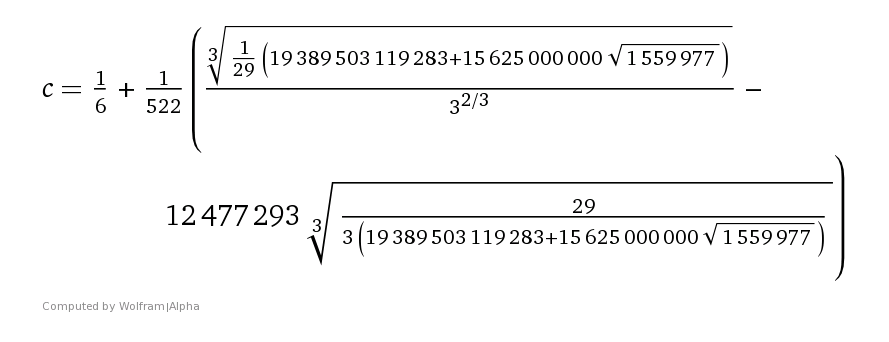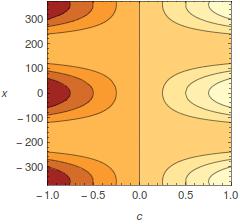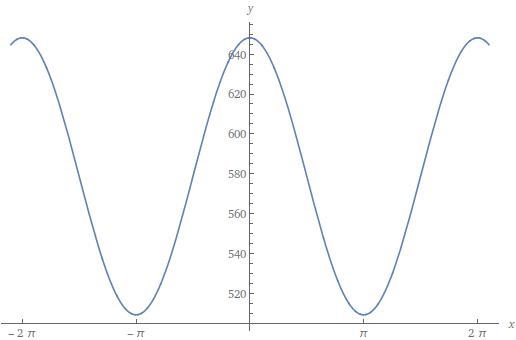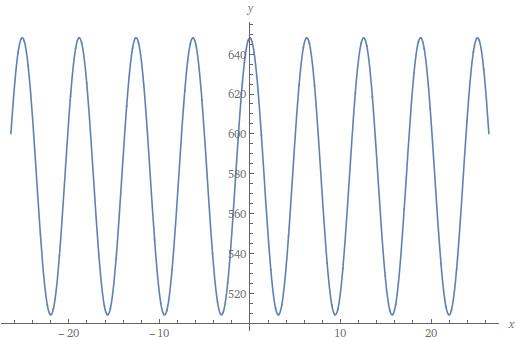Castling sum of 1-144 (10440) into 1044 (obviously the sum had to contain 144) and trying it
out with expression / equation 2 or 3. ->
- We used (sqrt((2*c)+sqrt(1/(2*c))*(2*c)**2)) = 1/0.1044 to get the following:

- It is of course a bit haphazard, both in that we used numerology and that the occurrence of the
constant from Wien's Displacement law, 29, could be random.
- If it's not the above then it could be another piece of the puzzle.
- This is the pure text output: c==1/6+1/522 (Power[19389503119283/29+(15625000000 Sqrt[1559977])/29,
(3)^-1]/3^(2/3)-12477293 Power[29/(3 (19389503119283+15625000000 Sqrt[1559977])), (3)^-1]) and a lot more
could probably be done with the rest of the numbers in this expression but more interesting, what could
this output indicate if anything?
- 15625000000/1247729==1252.274832369489 close to filed A. x*6000/6076 to get maybe geodesic values
== 1236.6110918724382. Though if we could according to the book we would have calculated this to be
the value at a specific latitude or something requiring deviation from the standard value. Though again if
this value would be taken as a harmonic of the square centimeter value or square inch we don't know. Admittedly
if the analysis here is not complete it could be considered total waste of time.
- 15625000000 equals both (2**6)*5**12 and 50**6. Also if we use the harmonic terms 1.5625 is the square of
1.25 which 1/x equals 0.8 or 1/1.5625 equals 0.64. We seem to have been looking for this value earlier. It's also
interesting because the firsts are just 2 and 5 in exponents, and as stated earlier 2*5=10 , also x/2 or x*5 or
something is the same in harmonic terms if we could use it, i.e. 20/2=10 and say 20*5=100, this would apply to any
number like 6/2=3 and 6*5=30 maybe. This is because 2*5=10 so because of that it has to be that way when use multiplications
or dividing by 5 and 2, a natural product of the deci-mal-system (10-digit system).
d
- In this context here not much difference between 12477293*pi or 12477293/pi. We have still not found any golden
ratio between these numbers though.
- !144 or SUM(1-144) is 10440 as said and that may be a so-called SSRCD number (that is that it's easy to remember).
- We have f=0.7071067811..from these equations, and it's also easy to make out something that looks like these
so-called harmonics from anything admit, though the text on this site are only speculations. So we have:
x=tangent(f)*6**8==1435249.393518728, and maybe try this in the relativity equations again:
- cathie3(x)==69758.34279445554 some gravity reciprocal → 1/x==1.4335202929727295e-05 another light harmonic.
- If we we're smart we'd jumble up the equations and try to use these last figures somehow.
- We found a value close to tangent(f)*6**8==1435249.393518728 at longtitude 44" (or maybe 45" with 0.707107) for (K)
speed of light in vacuum, at the Earth's surface. But it's about time to connect the dots. So speculations should be in order
now.
- If the former it's latitude 45" it may not be specially curious, as this divides 90"/2..
- Funfact, f seems to be related to Schrødinger Equation whatever that is, also 1/6 is related to it.
"In quantum mechanics, the Schrödinger equation is a partial differential equation that describes how the quantum
state of a physical system changes with time. It was formulated in late 1925, and published in 1926,
by the Austrian physicist Erwin Schrödinger.", doesn't tell us much.
- Some web-page also says: "Begin with the cosine of 45 degrees = 0.7071067811." So →
- Then we have something like cos(radians(x)) in (1/c)^(-3/2) + 0.707107 c == 1705.02 which has at least something
to do with this. and this is another way of printing (sqrt((2*c)+sqrt(1/(2*c))*(2*c)**2)) = 1/0.0144. That is we have
(1/c)^(-2/2)+cos(radians(x))*c where we maybe can substitute x for degrees or radians on a sphere, which we will do next.
- And get at least:

which looks somewhat like a wave.
- The above formula seemed wrong the prop one should be (1/c)^(-3/2) + cos (x)*c where c is 1/0.0144 which gives
a sinus curve / wave-function (which should be good,):

and

- The challenge now is to integrate cos(x) somehow into the formula at the top. But this will take time.
index of the main page.







